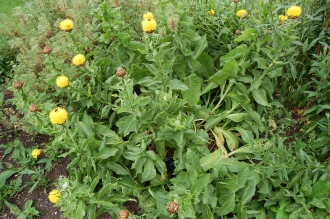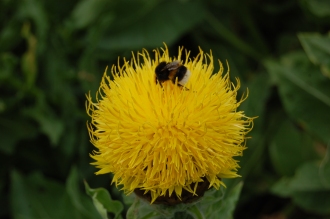Position: Full sun to light shade
Soil: Moist and well drained
Flowering period: Summer
Eventual Height: 1.5m
Eventual Spread: 60cm
Hardiness: 3a, 3b, 4a, 4b, 5a, 5b, 6a, 6b, 7a, 7b, 8a, 8b, 9a, 9b
Family: Asteraceae
Centaurea macrocephala is a deciduous herbaceous perennial with a clump forming habit. Its mid green leaves are lanceolate with entire margins, up to 15cm long and 4cm long. Its yellow flowers are thistle like, up to 10cm across and borne on lax stems.
Centaurea macrocephala, commonly known as Great Headed Centaury or Armenian Basket Flower, is native to the Caucasus and Turkey. It is classified as a noxious wed in a number of states in the USA.
The etymological root of the binomial name Centaurea is named after the Centaur (a Greek mythological creature), a name given to the plant commonly known as Centaury. Macrocephala is derived from the Greek makros meaning ‘large’ and kephale meaning ‘head’.
Centaurea macrocephala may be useful to the landscape architect as part of a mixed herbaceous border, towards the back where it will have the support of other perennials. This plant is not attractive to deer or rabbits. Once established this plant is drought tolerant.
Ecologically, Centaurea macrocephala flowers are attractive to pollinating insects. Its seeds are attractive to some birds.
Centaurea macrocephala prefers moist, fertile, well-drained soils. It tolerates most pH of soil. This plant dislikes wet soils.
Centaurea macrocephala requires little maintenance. Large clumps may be divided in spring or autumn. Regularly deadheading will prolong the flowering period.







Leave a comment